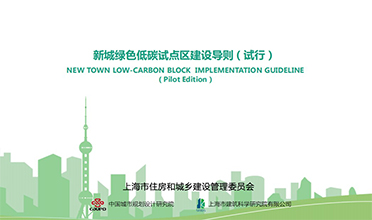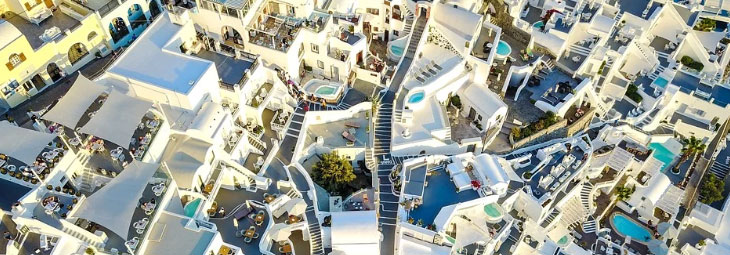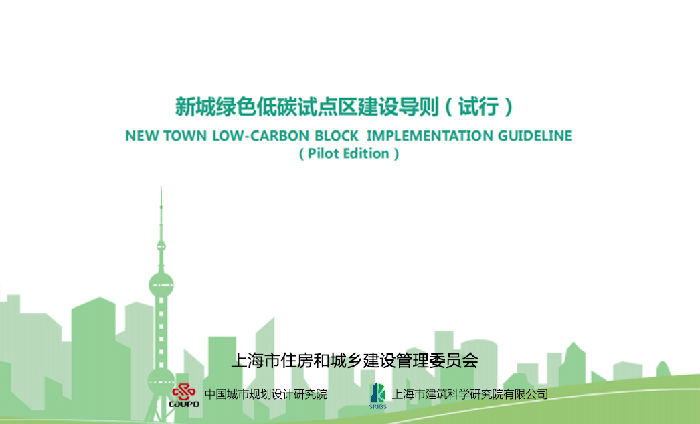



7.Green and resilient infrastructure
7.1 Overall requirements
The guidelines suggest that new cities should build a safe and resilient infrastructure system and set goals and strategies to enhance its ability to reduce carbon emissions and increase carbon sinks. The guidelines suggest promoting energy conservation and emission reduction through measures such as building an efficient and healthy water recycling system, a low-waste neighborhood and a high-quality lifeline system, and establishing a replicable and transferable green and low-carbon city infrastructure system.
7.2 Efficient and healthy water circulation system
1)Increase the penetration rate of water-saving devices
New construction areas should use high-efficiency sanitary appliances and ensure that all appliances have a water efficiency rating of 2 and above. In addition, green irrigation and air-conditioning cooling water systems should adopt water-saving equipment or technology to reduce water waste.
2)Construction of sponge-type neighborhoods that combine water storage and drainage functions
The construction of new areas should coordinate building floor elevation, road elevation, green space elevation and river water level, and carry out vertical planning and design in a scientific manner. The guidelines recommend the construction of green infrastructure such as recessed green areas, squares, rain gardens and ecological storage ponds to control the total amount of rainwater runoff and improve rainwater storage capacity. The spongy neighborhood not only achieves the ability to cope with extreme weather, but also reduces the pumping volume of the polder and reduces the energy consumption of the pumping station.
3)Establishment of water circulation system
The construction of new areas should coordinate building floor elevation, road elevation, green space elevation and river water level, and carry out vertical planning and design in a scientific manner. The guidelines recommend the construction of green infrastructure such as recessed green areas, squares, rain gardens and ecological storage ponds to control the total amount of rainwater runoff and improve rainwater storage capacity. The spongy neighborhood not only achieves the ability to cope with extreme weather, but also reduces the pumping volume of the polder and reduces the energy consumption of the pumping station.
7.3 Low waste blocks with high recycling rates
1)Promote the recycling of domestic waste
The new city should continue to promote the collection and treatment of household waste classification measures, including the construction of community recycling system, encourage the use of "Internet + recycling", put intelligent recycling machine, etc., to achieve the organic combination of renewable resources recycling online and offline. The guidelines encourage the setting up of demonstration recyclables recycling service points with composite functions such as waste classification promotion, green account service and recyclables drop-off, etc.
2)Reduction of construction waste and rational recycling
The guidelines advocate the reuse of building waste on construction sites. Construction sites in the pilot areas with conditions should use mixed soil, steel and other residual materials to produce various types of engineering materials to achieve waste recycling. When the construction site does not have the conditions for in place use, the waste should be transferred to the construction waste disposal site for recycling in a timely manner in accordance with the regulations. At the same time, the new city should count and monitor the amount of construction waste generated in real time to improve the level of construction waste recycling. Eventually, the pilot area shall achieve the standard that the construction waste emission from assembled buildings is not higher than 200 tons/square meter, and the construction waste emission from other new buildings is not higher than 300 tons/square meter.
7.4 High-quality lifeline projects
1)Reduce the leakage rate of water supply network
The guidelines propose that the construction of water supply systems should use high-performance pipes and fittings to reduce leakage in the network, improve the management of water supply networks, and ensure the efficient and stable operation of urban water supply systems.
2)Guarantee the operation of natural gas pipeline network
The new city should build the natural gas pipeline network system in the pilot area with high standards and quality to avoid energy waste caused by gas leakage and also to ensure operational safety. For renewal areas, the guidelines recommend promoting old gas pipeline network renovation projects to improve gas quality and reduce the risk of leakage.
3)Explore the hybrid hydrogen transmission method by natural gas pipeline network
The guidelines require new cities to build at least one gas pipeline network demonstration project suitable for mixing hydrogen and natural gas, so as to provide technical support for the promotion of natural gas blending and carbon reduction in the future, and to provide scenarios for the application of clean energies such as green hydrogen power.
4)Establish a digital platform for underground pipelines
The guidelines require the new city to establish a digital platform for underground pipelines as a way to strengthen the intelligent control of water supply, gas and other underground lifeline projects. At the same time, the new city should promote the deep integration of the underground pipeline digital platform with the city information model (CIM) platform to provide support for the whole process management of underground pipelines.
Source: <https://zjw.sh.gov.cn/jsgl/20220301/4f85d9ad98954bee9004a0d6d529f086.html>
Translated by Hou Ying